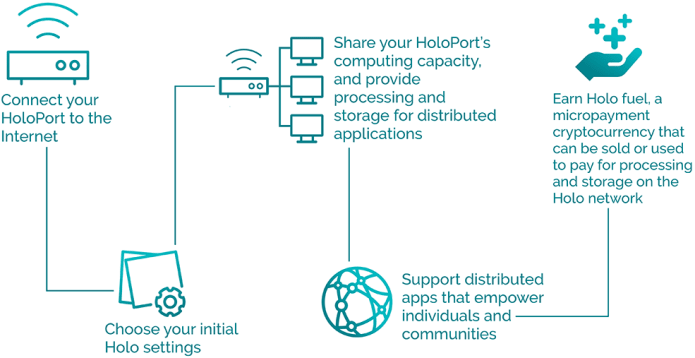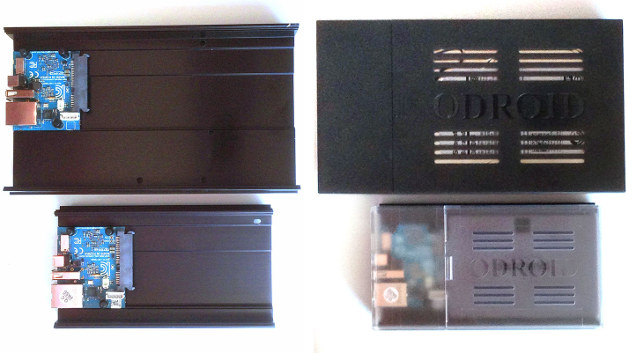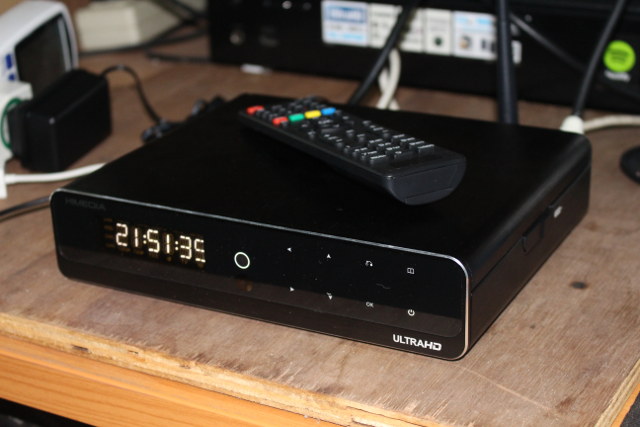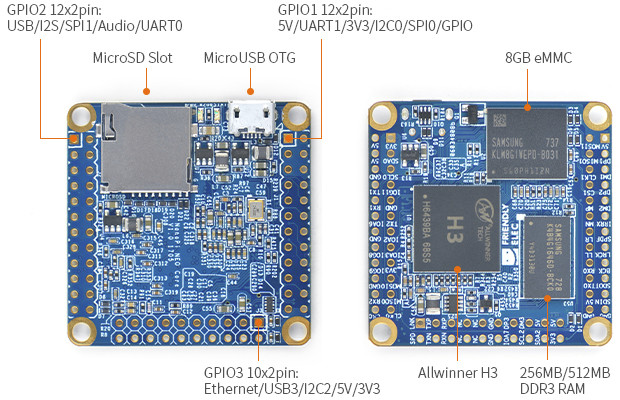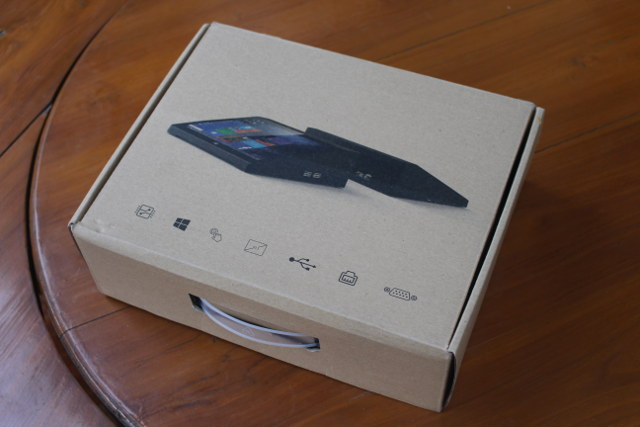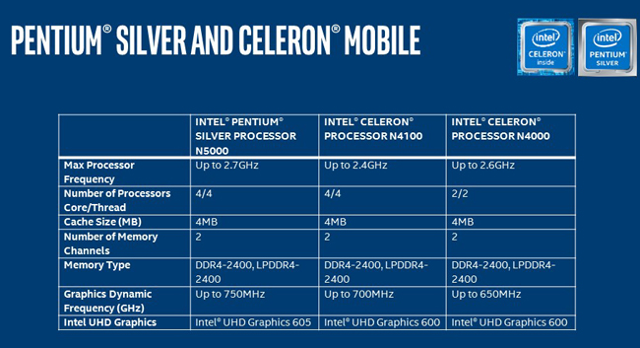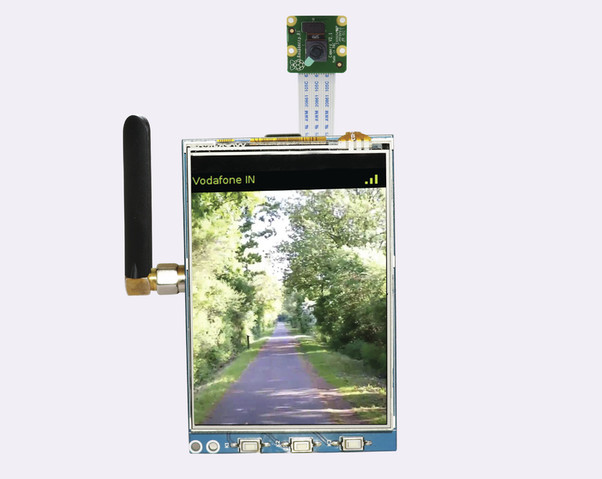The Internet is now mostly centralized, for example most people search with Google, and Facebook dominates the social media space in many countries. That also means access to content can easily be blocked by governments, and many companies will use your personal data to their benefits. Holo network promises to “take back the Internet” thanks to a P2P distributed web hosting system, where people hosts app from developers in their HoloPort devices, and get paid for hosting crypto apps in Holo Fuel cryptocurrency that can in turn be used to pay for processing power and/or storage on the network, or converted into other cryptocurrencies like Bitcoin, or fiat money (Dollars, Euros…). It’s like a new Internet that uses the current “pipes” (i.e. you’d still need Internet through your ISP), but all content would have to be created from the ground up. It basically aims to replace datacenters, websites, and app […]
More Low Cost ARM Linux NAS Platforms Coming Soon: Popcorn Hour Transformer (XL), ODROID-HC2
Last summer, Hardkernel launched ODROID-HC1 Home Cloud 1 taking a single 2.5″ hard drive, and based on a modified version of their popular Exynos 5422 powered ODROID-XU4 board where they removed HDMI, and added a SATA interface (via USB 3.0), but based on the initial announcement, we also knew the Korean company was working on ODROID-HC2 supporting 3.5″ drives instead. The device is not available yet, but guys at Armbian got an early unit, so we should not be waiting too long. Hardkernel will also have some competition for their ODROID-HC1 NAS, as Cloud Media (and Pine64?) are working on Rockchip RK3328 based Popcorn Hour Transformer & Transformer XL with support for 2.5″ and 3.5″ drives respectively. Hardkernel ODROID-HC2 ODROID-HC2 preliminary specifications: SoC – Samsung Exynos 5422 octa-core processor with 4x ARM Cortex-A15 @ 2.0 GHz, 4x ARM Cortex-A7 @ 1.4GHz, and Mali-T628 MP6 GPU supporting OpenGL ES 3.0 / […]
HiMedia Q10 Pro 4K TV Box Review – Part 2: Full Blu-ray Navigation & Playback
HiMedia Q10 Pro is an Android TV box powered by HiSilicon Hi3798CV200 SoC that was launched in March 2016, but the company recently provided a firmware update with support for Full Blu-ray navigation, and asked me to review that part. I received the device last month, posted the first part of the review with HiMedia Q10 Pro unboxing, and also explained how to install a 3.5″ SATA drive at the time. I’ve now acquired a few Blu-ray RIPs in order to test 4K Blu-ray video playback and navigation specifically. Initial Setup, Firmware Update, and Copying 4K Blu-ray Videos to the Hard Drive I connected the TV box to Onkyo TX-NR636 AV-Receiver, itself connected to LG 42UB820T 4K UHD television. If you’ve ever owned an HiMedia TV box the Android launcher should be familiar. If you want more details about the launcher, and user interface, checkout my HiMedia Q30 review. It’s […]
NanoPi NEO Core and NEO Core2 Allwinner H3/H5 Systems-on-Module Launched for $7.99 and Up
FriendlyELEC has launched many cool NanoPi development boards such as NanoPi NEO2, NanoPi A64, or more recently NanoPi Duo based on Allwinner H- or A- series ARM processors, as well as some models based on Samsung/Nexcell or Amlogic SoC. The company has now launched two other NanoPi products that are a bit different since they are systems-on-module – or could even be considered minimal development boards – with namely NanoPi NEO Core powered by Allwinner H3 quad core 32-bit processor, and NanoPi NEO Core2 based on Allwinner H5 quad core 64-but processor. NanoPi NEO Core Specifications: SoC – Allwinner H3 quad core ARM Cortex-A7 processor up to 1.2GHz with Mali-400MP GPU System Memory – 256MB or 512MB DDR3 RAM Storage – NC/8GB/16GB/32GB eMMC flash, micro SD slot USB – 1x micro USB OTG port also used for power input Expansion – 2x 2.54mm pitch 24-pin headers, 1x 2.54mm pitch 20-pin […]
F6 / GOLE 10 Mini PC Tablet Review- Part 1: Specs, Unboxing and Teardown
Mini PCs and tablets are normally distinct product category, but in recent years we’ve seen mini PCs fitted with touchscreen displays, which are somewhat like industrial panel PCs with mostly consumer grade, and with the display placed at an angle. PiPo has designed several of those with models such as PiPo X8 or PiPo X9S. Shenzhen Qianhai GOLE Technology (aka GOLE) is another company manufacturing “mini PC tablets”, but when I reviewed their first GOLE1 model, I did not find it very useful because a 5″ display is quite inconvenient with Windows 10, and even for Android as if you may not always keep it close like a phone, except for some very specific applications. The company has now launched another model called GOLE 10 (aka F6), still based on an Atom x5 processor, but that should be more useful thanks its 10.1″ touchscreen display with 1920×1200 resolution. I’ve received […]
Marvell 802.11ax WiFi Chips are Designed for Enterprise Gateways, Mainstream Routers, and Set-Top Boxes
High-Efficiency Wireless (HEW), better known as 802.11ax, is a new WiFi standard that is supposed to deliver up to 10 Gbps bandwidth over 2.4 and 5.0 GHz frequencies, and improve the average throughput per user by a factor of at least 4 times in dense environments. Several draft of the specifications have been voted on, but the latest 802.11ax timeline seems to indicate the final 802.11ax specifications will only be approved sometimes in 2019. This has not prevented companies to announce or unveil 802.11ax SoC or solutions based on the draft specifications, as we’ve seen in the past with NXP Layerscape LA1575 programmable WiSoC, Qualcomm gateway reference design, and Broadcom Max WiFi chips. Marvell has now joined the fray with their 802.11ax wireless portfolio. All Marvell 802.1ax WiSoCs support all using uplink & download OFDMA / MU-MIMO, 1024 QAM, off-channel spectrum scanning, dedicated in-service monitoring, and precision location. Three SKUs […]
Six Intel Gemini Lake Processors Launched: Pentium Silver N5000 / J5005, and Celeron N4100, N4000, J4105 and J4005
Most of us have been expecting Intel Gemini Lake processors for a while, many of the features are already known, but there were some delays, and Intel has now only officially launched Intel Gemini Lake family with 6 processors. The models include two Pentium Silver quad core processor with N5000 for mobile, J5005 for desktop, and four Celeron dual/quad core processors with N4000 & N4100 for mobile, and Celeron J4005 & J4105 for desktop. All processors share the same 4MB cache which will help with performance improvement, and dual channel DDR4-2400, LPDDR4-2400 memory. Pentium processors come with Intel UHD Graphics 605 clocked up to 750/800 MHz, and Celeron processors are instead equipped with UHD Graphics 600 up to 650/750 MHz which the exactly frequency depending on model. The company also introduced Intel Pentium Silver and Intel Pentium Gold brand levels with the former on Gemini Lake architecture, and the latter […]
Turn Your Raspberry Pi into a “Smartphone” or Cellular IoT Gateway with PiTalk 3G HAT (Crowdfunding)
The Raspberry Pi boards are used in a countless number of projects, and some of those turn one of Raspberry Pi boards into a (thick) smartphone powered by Linux. The first one was probably PiPhone based on Raspberry Pi 1 Model B, and other followed suit such as TyTelli based on Raspberry Pi Model A+, and more recently ZeroPhone powered, as its name implies, by Raspberry Pi Zero board. UK based SB Components Ltd is offering another option with their PiTalk HAT based on a Quectel 3G UMTS module, and kits adding a 3.2″ to 5″ display, an optional camera, and/or Raspberry Pi 3 board. PiTalk board specifications: Cellular Connectivity Quectel UC15 3G/2G UMTS/HSDPA and GSM/GPRS/EDGE module with up to 3.6 Mbps download, 384 Kbps upload SMA antenna connector Push push SIM card holder Voice, SMS and data support Audio – 3.5 mm audio jack, speaker and mic support via […]

